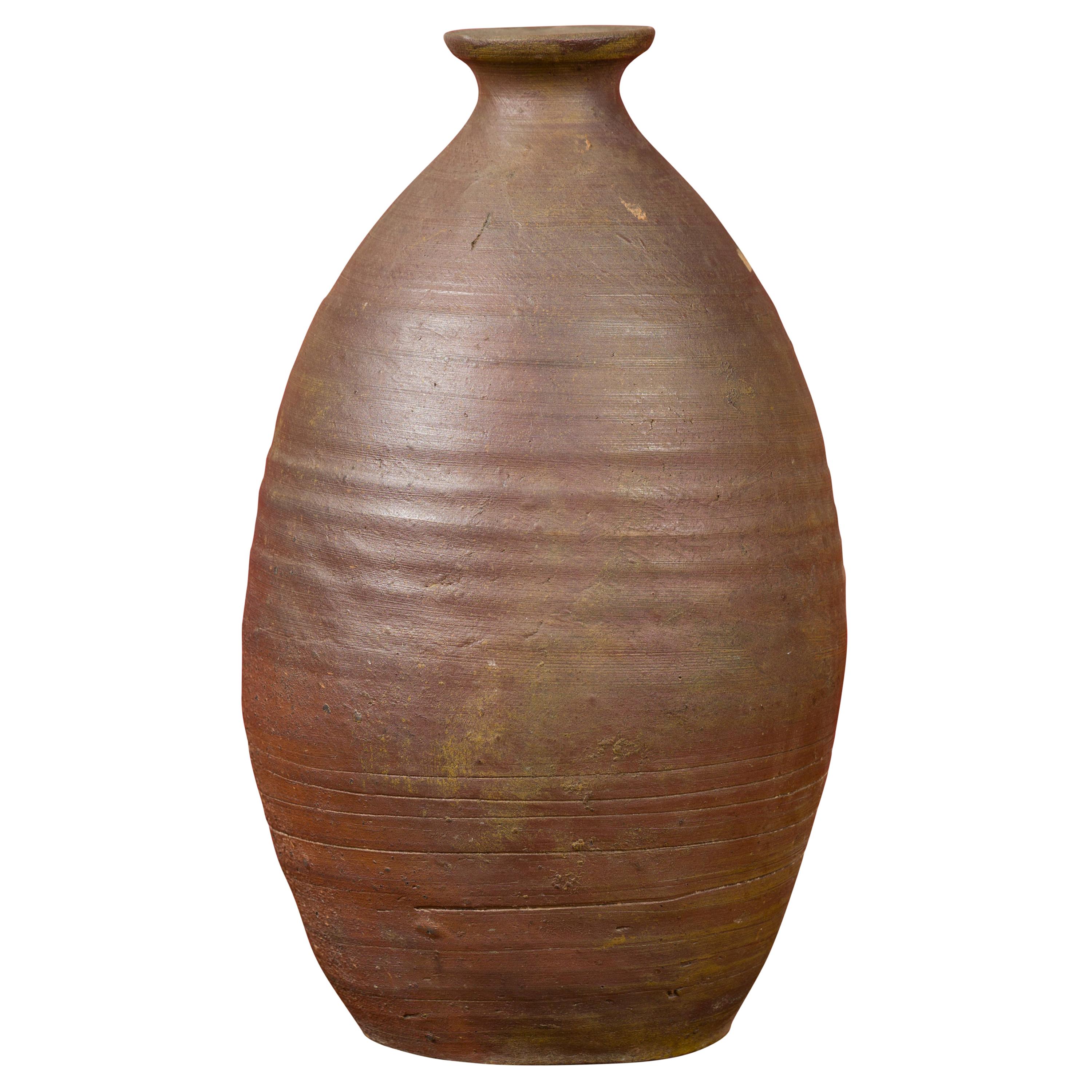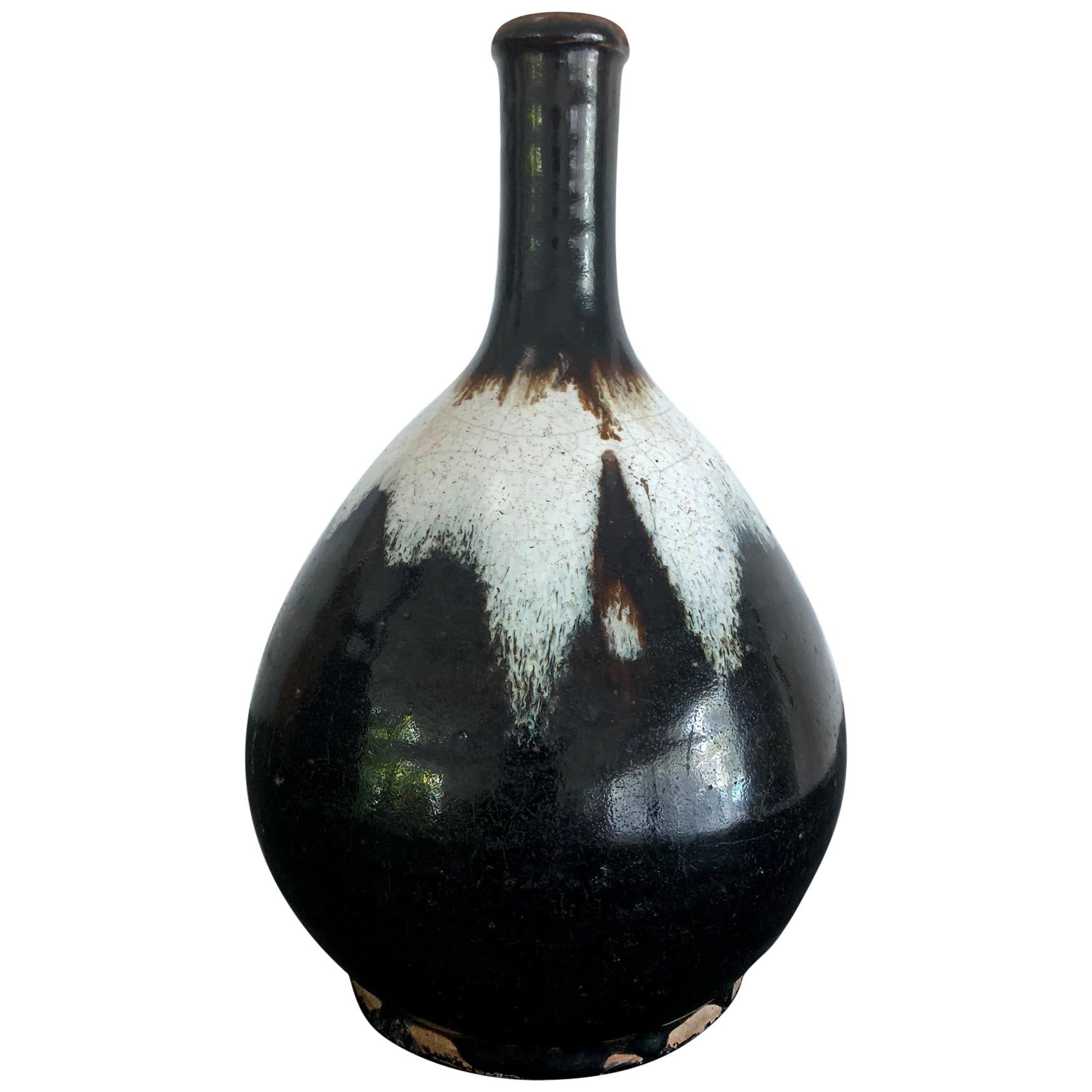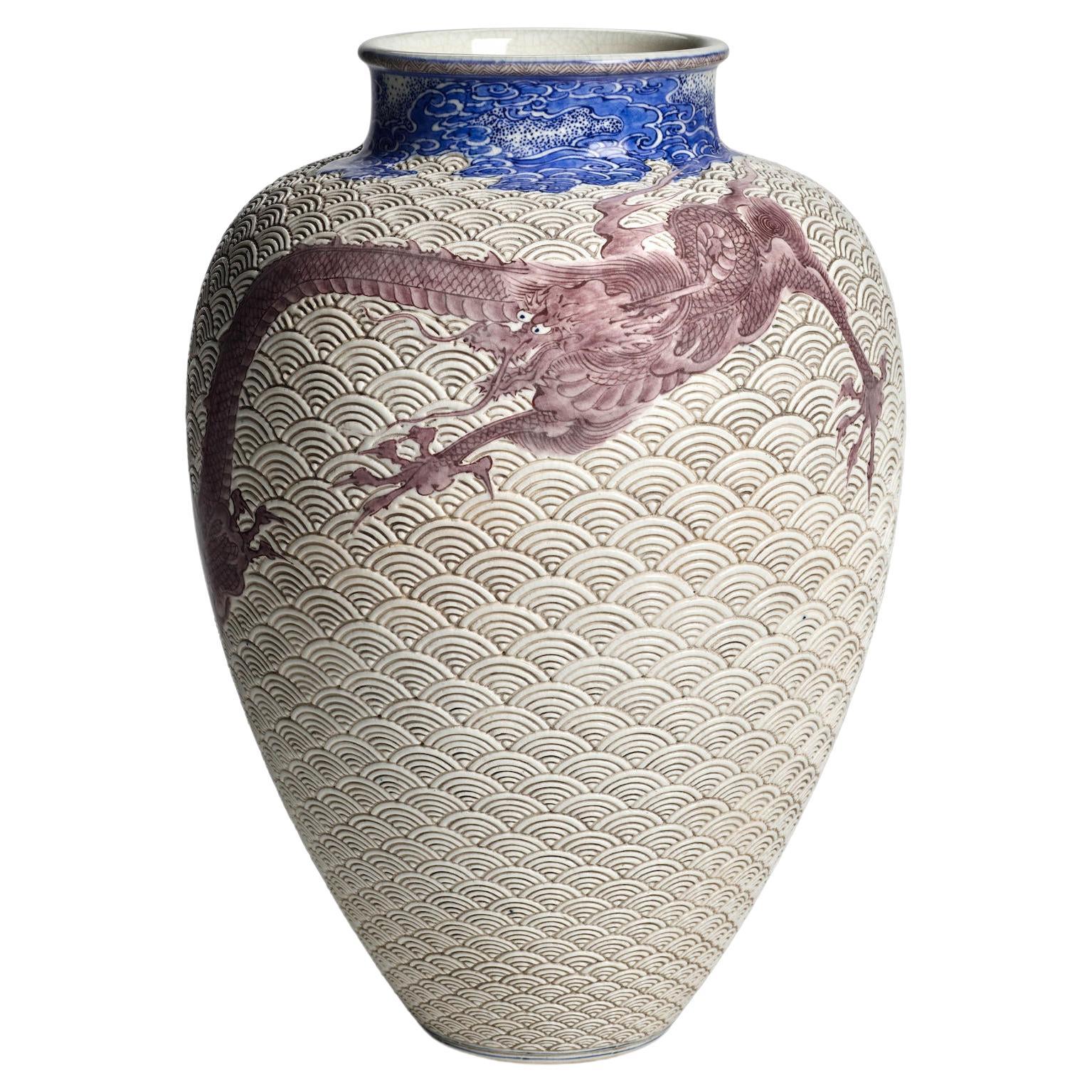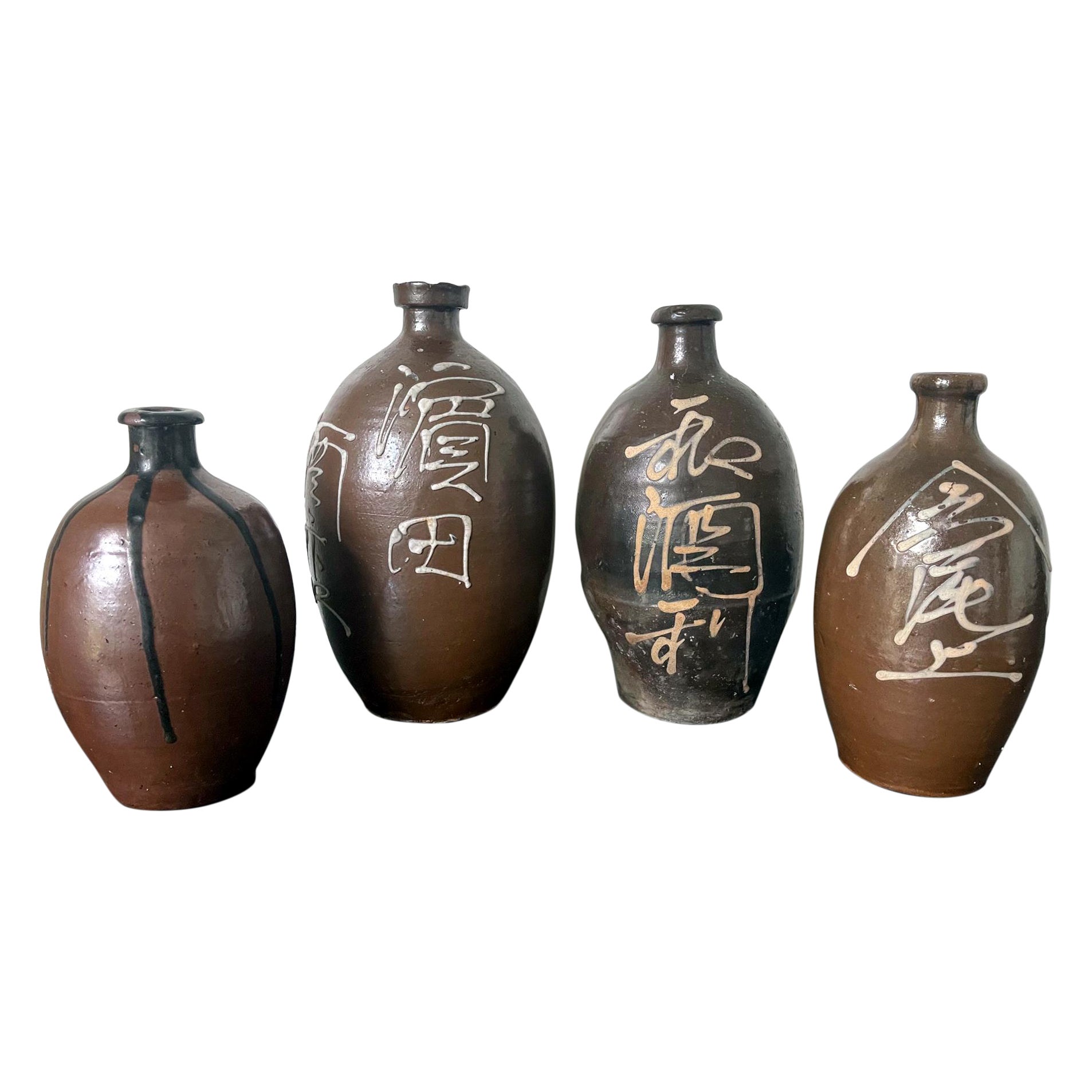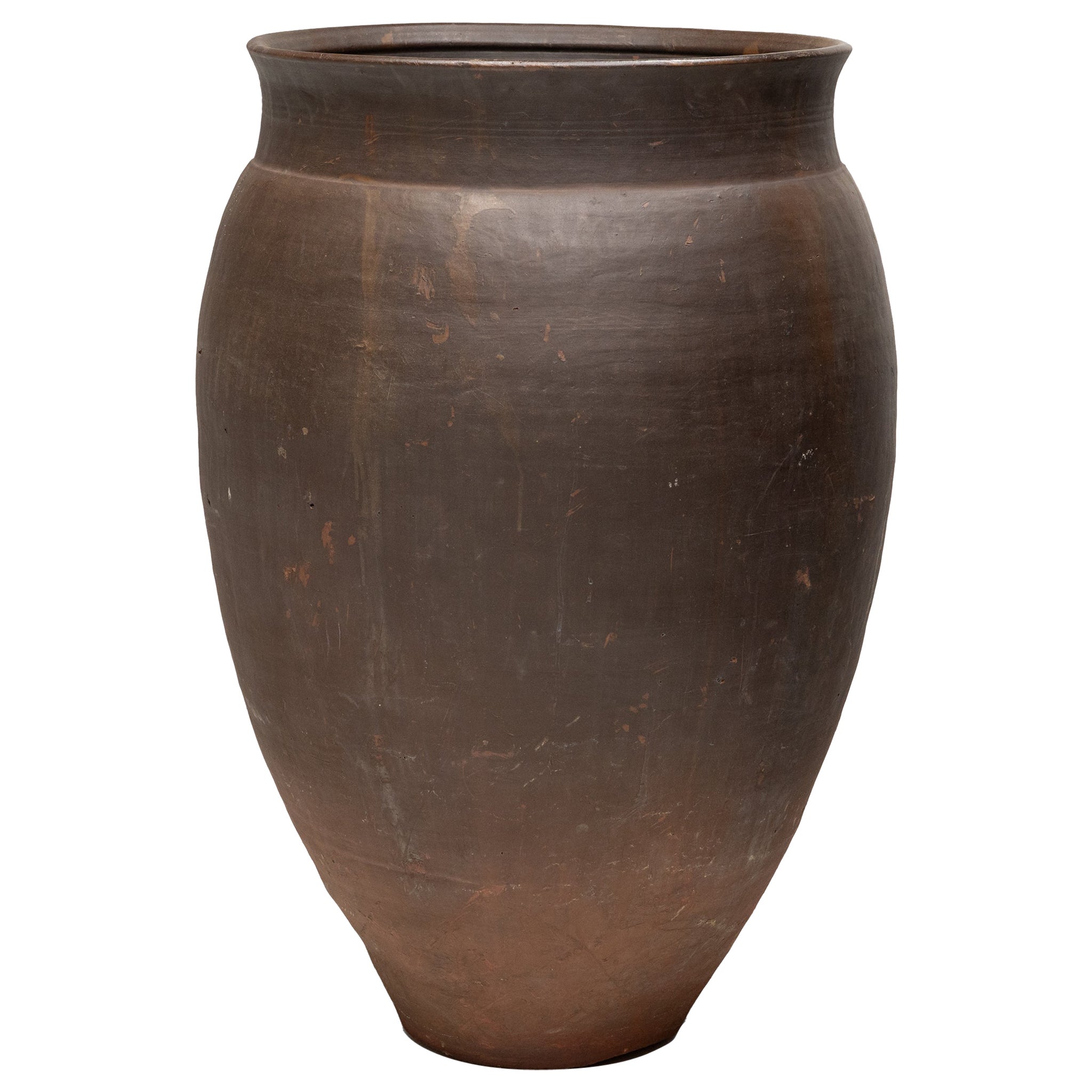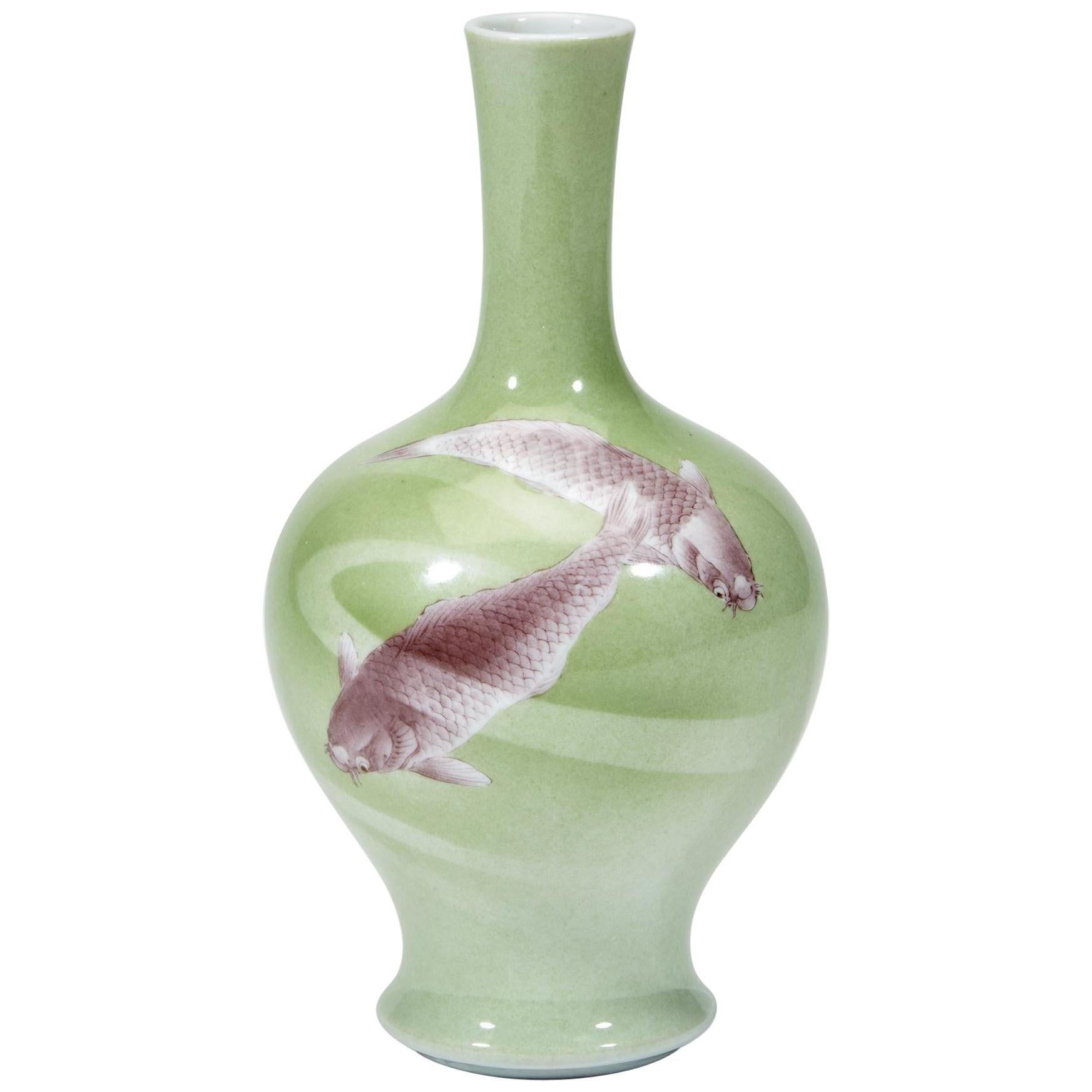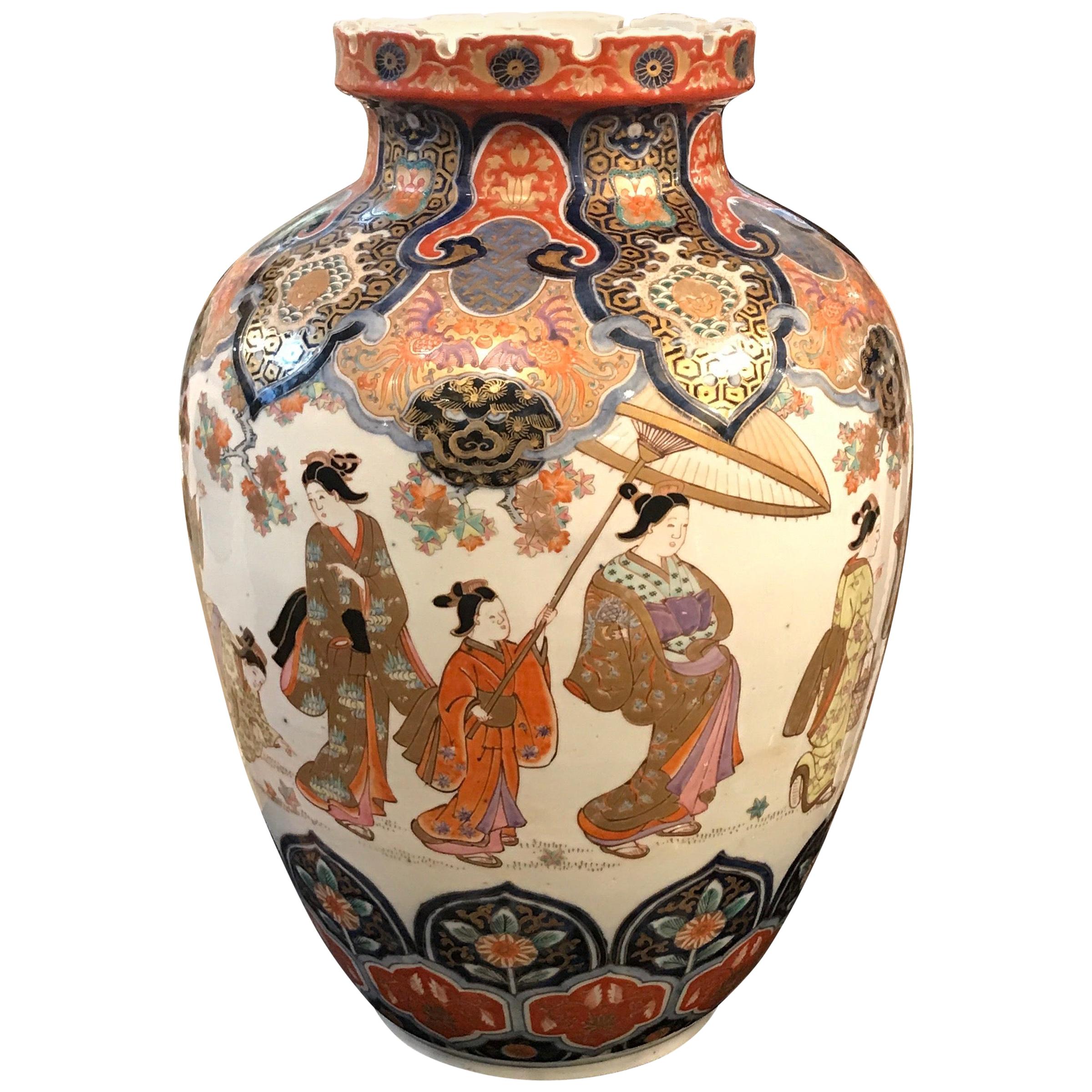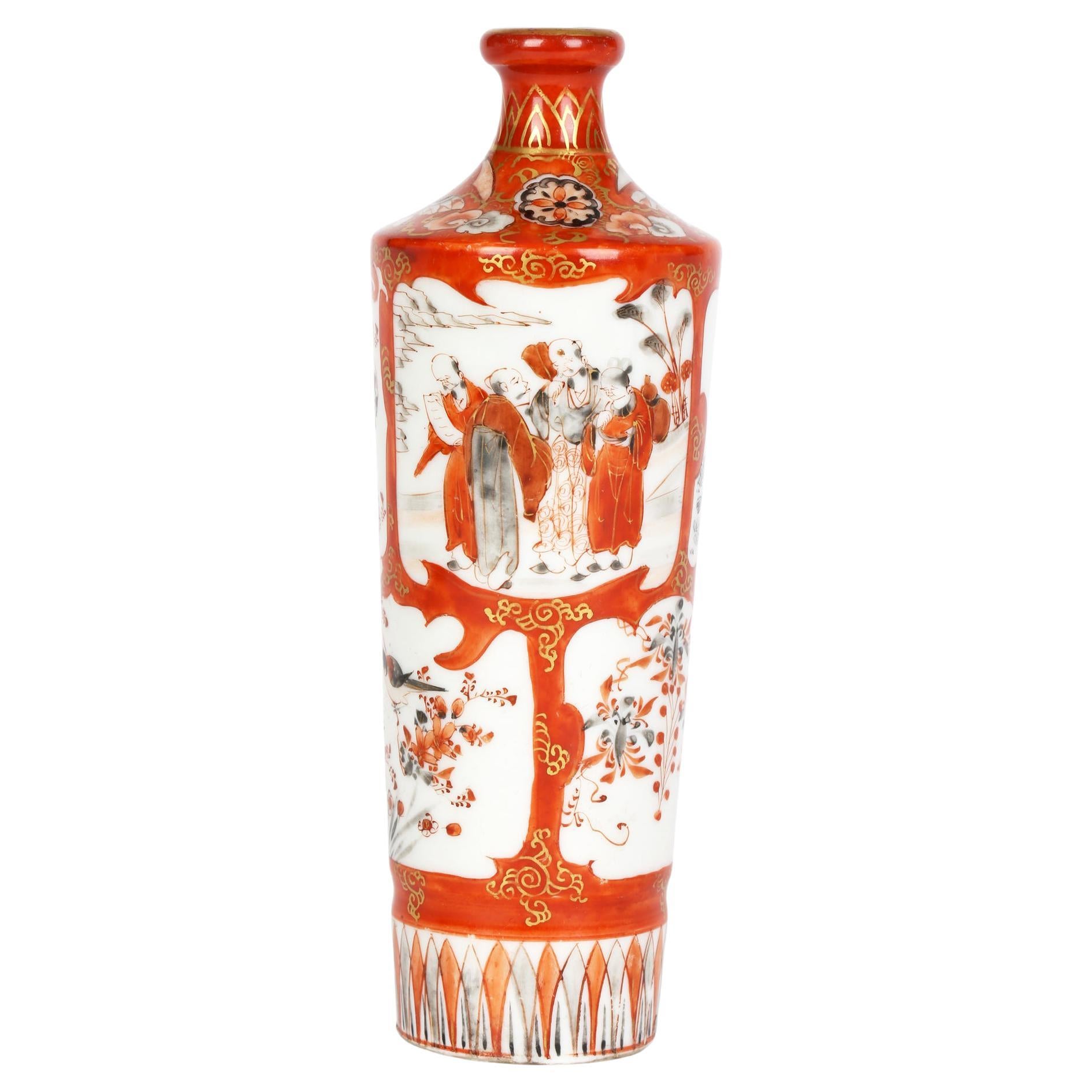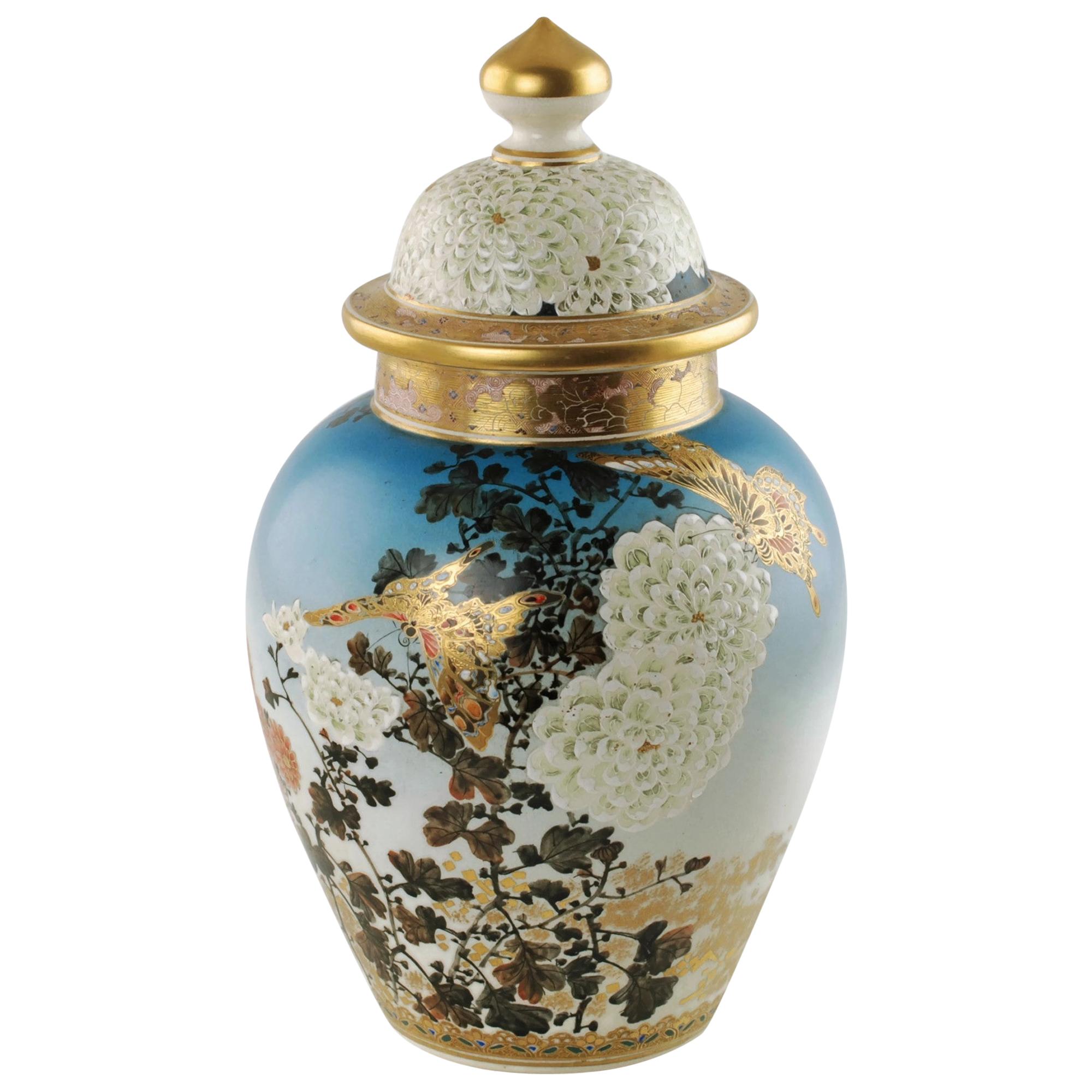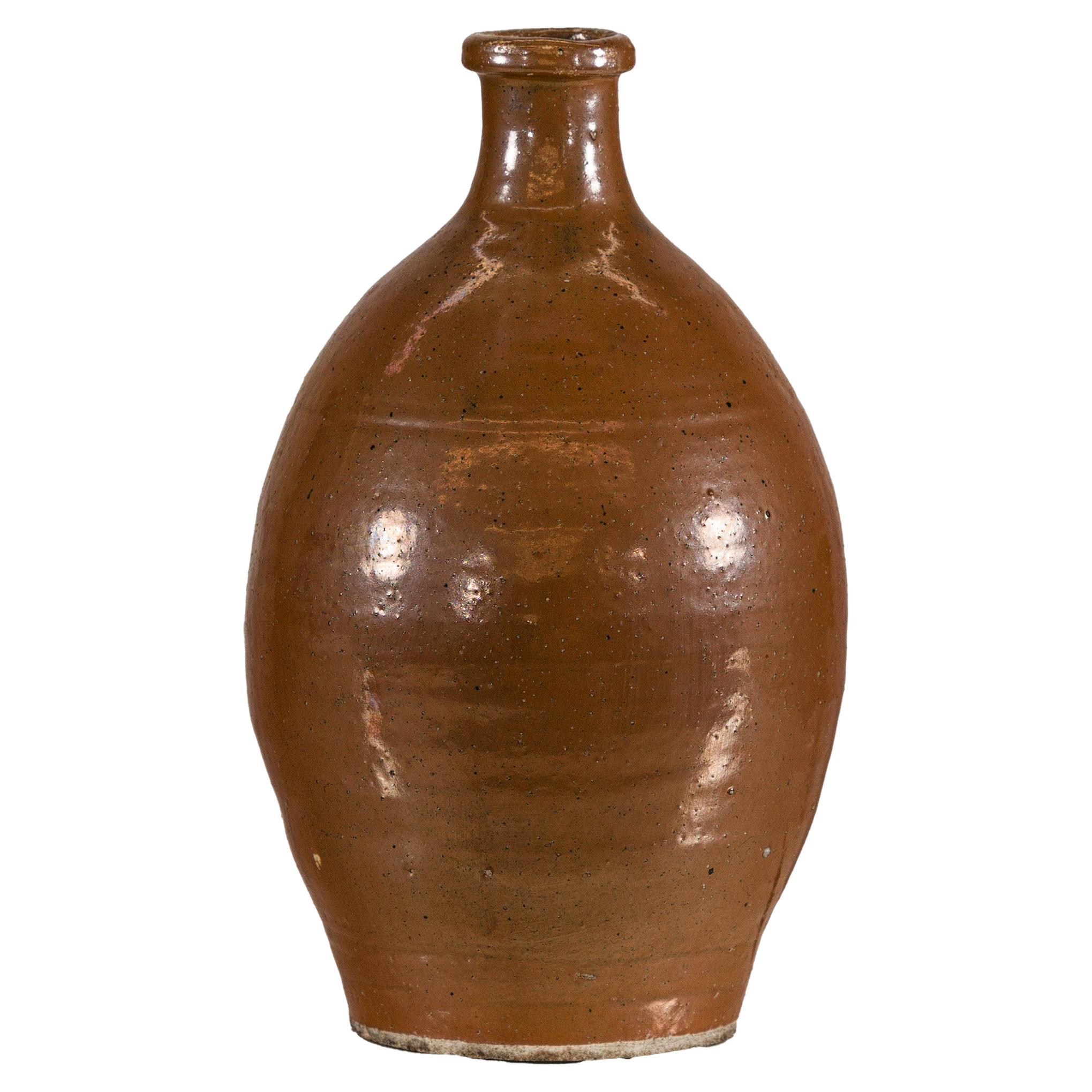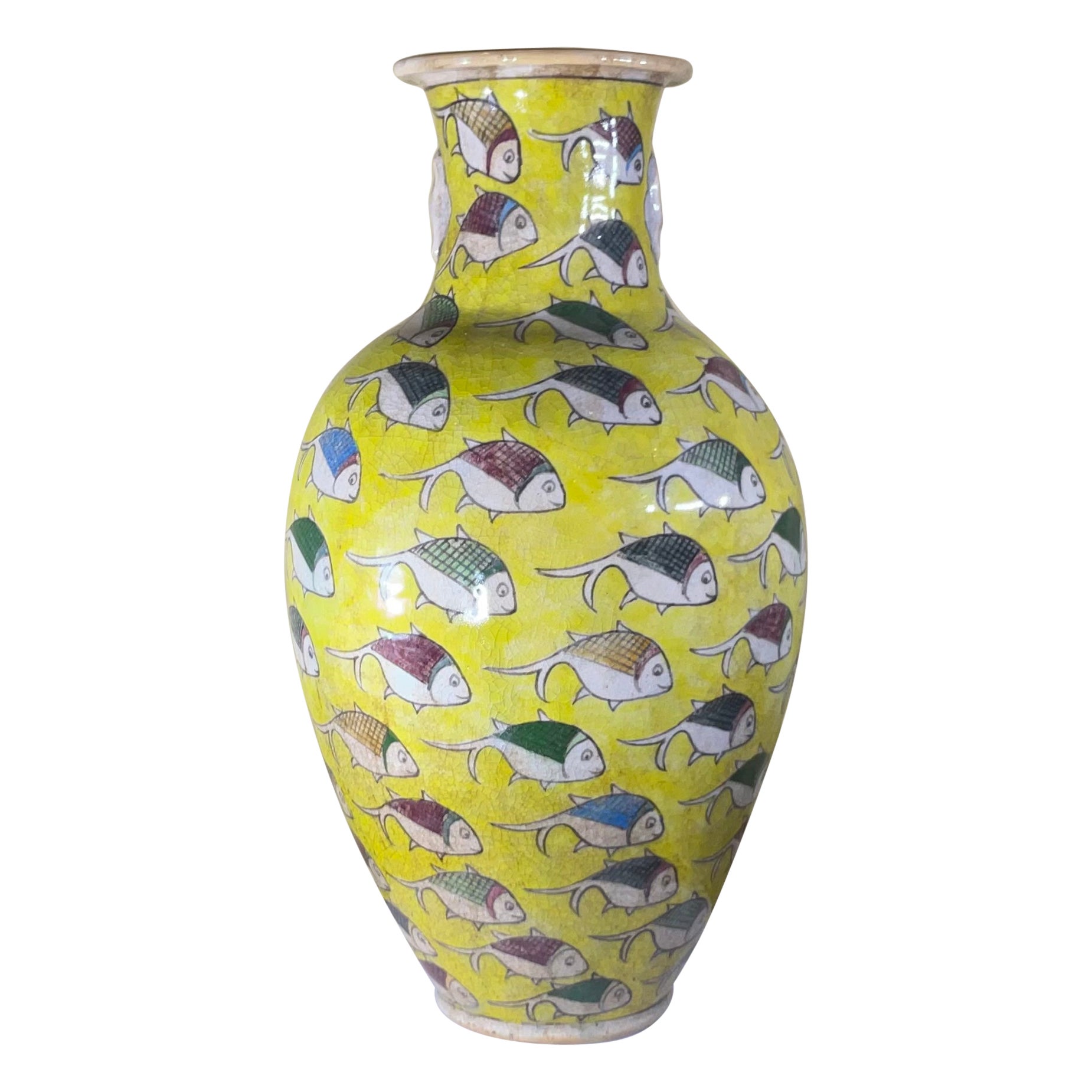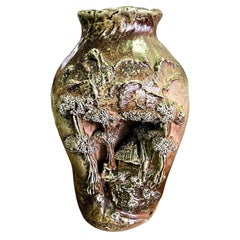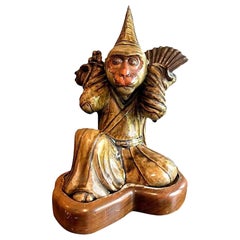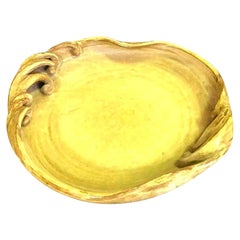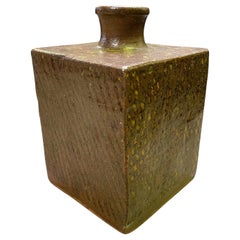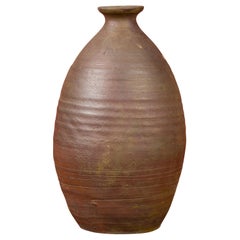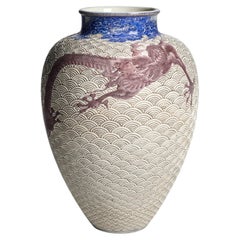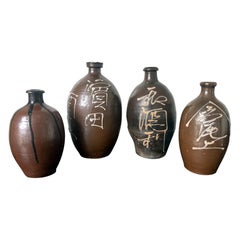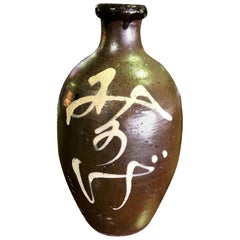
Japanese Asian Large Ceramic Vintage Meiji Hand Painted Glazed Sake Bottle Jug
View Similar Items
Want more images or videos?
Request additional images or videos from the seller
1 of 6
Japanese Asian Large Ceramic Vintage Meiji Hand Painted Glazed Sake Bottle Jug
$169List Price
About the Item
- Dimensions:Height: 12 in (30.48 cm)Diameter: 6.5 in (16.51 cm)
- Style:Meiji (Of the Period)
- Materials and Techniques:
- Place of Origin:
- Period:
- Date of Manufacture:Late 1800s-Early 1900s
- Condition:Wear consistent with age and use. In good vintage condition (please see photos). Beautiful overall.
- Seller Location:Studio City, CA
- Reference Number:1stDibs: LU2254318535352
About the Seller
5.0
Platinum Seller
Premium sellers with a 4.7+ rating and 24-hour response times
1stDibs seller since 2016
906 sales on 1stDibs
Authenticity Guarantee
In the unlikely event there’s an issue with an item’s authenticity, contact us within 1 year for a full refund. DetailsMoney-Back Guarantee
If your item is not as described, is damaged in transit, or does not arrive, contact us within 7 days for a full refund. Details24-Hour Cancellation
You have a 24-hour grace period in which to reconsider your purchase, with no questions asked.Vetted Professional Sellers
Our world-class sellers must adhere to strict standards for service and quality, maintaining the integrity of our listings.Price-Match Guarantee
If you find that a seller listed the same item for a lower price elsewhere, we’ll match it.Trusted Global Delivery
Our best-in-class carrier network provides specialized shipping options worldwide, including custom delivery.More From This Seller
View AllJapanese Large Heavy Banko Ware Ceramic Pottery Stoneware Vase, 19th Century
Located in Studio City, CA
A fantastic, wonderfully glaze stoneware Banko ware vase with beautifully detailed craftsmanship.
Banko ware pottery is thought to have originate...
Category
Antique 19th Century Japanese Meiji Ceramics
Materials
Stoneware
Japanese Signed Glazed Edo/Meiji Ceramic Pottery Monkey with Custom Wood Stand
Located in Studio City, CA
A truly fantastic and rather unique piece. The collectors we have shown have gone gaga over this piece.
Beautifully crafted and glazed with amazing detail to facial features.
...
Category
Antique 19th Century Japanese Meiji Ceramics
Materials
Ceramic
Japanese Asian Signed Stamped Large Ceramic Pottery Glazed Low Bowl Charger
Located in Studio City, CA
A gorgeous, substantial work. Beautifully designed and made.
Signed/ chop stamped by the artist on the base.
From a prominent Los Angeles collection of Japanese and Asian ceramics ...
Category
20th Century Japanese Showa Ceramics
Materials
Ceramic
Tatsuzo Shimaoka Japanese Glazed Rope Inlay Pottery Ceramic Vase with Signed Box
By Tatsuzo Shimaoka 2
Located in Studio City, CA
A wonderfully designed and gorgeously colored coveted square Mingei bottle vase by Japanese National Treasure pottery master Tatsuzo Shimaoka. This vase is an early work of Shimaoka's before he started to use his impressed "Ta" signature. The rich colors are truly amazing and shift in the light.
The vase comes with a Shimaoka signed and sealed box.
The work is exquisite in every way and has a wonderful feel and heft to it.
Shimaoka, who started as an apprentice to famed Japanese potter Shoji Hamada in 1946 before opening his own studio, has exhibited worldwide including North America, Asia, and Europe. In 1996 he was bestowed the title of Japanese Living Treasure...
Category
20th Century Japanese Showa Ceramics
Materials
Earthenware
Japanese Midcentury Large Glazed Pottery Vase in the Manner of Shoji Hamada
Located in Studio City, CA
A really large and wonderful piece. Clearly, the maker was a fan of Shoji Hamada's work. Could be a Mashiko Ware pottery vase.
Signed on the base along with a sticker on the insi...
Category
Vintage 1960s Japanese Showa Ceramics
Materials
Earthenware
Japanese Asian Signed Studio Pottery Wabi-Sabi Ceramic Glazed Chawan Tea Bowl
Located in Studio City, CA
A gorgeous Japanese studio pottery chawan tea bowl that features a wonderful reddish-orange glaze with various shifts in colour and texture.
This particular piece encompasses the...
Category
20th Century Japanese Showa Ceramics
Materials
Earthenware
You May Also Like
Japanese Meiji Period Early 20th Century Sake Bottle with Brown Patina
Located in Yonkers, NY
An antique Japanese Meiji period monochrome sake bottle from the early 20th century with concentric lines. Created in Japan during the Meiji period, this antique sake bottle captivat...
Category
Early 20th Century Japanese Meiji Bottles
Materials
Ceramic
Japanese Ceramic Sake Bottle Chosen Karatsu Ware
Located in Atlanta, GA
The long neck bottle of classic form was heavily potted with coarse clay with high iron content. The flask, circa 18th century Edo period, was purposed for sake storage but also substituted as a flower vase during tea ceremony. The surface is covered in glossy black glaze and contrasts strikingly with white ash glaze around the shoulder. The white, fired with straw, displays a splashing feather effect and fine crackles, blending in with the black artistically. This type of Karatsu ware...
Category
Antique 18th Century Japanese Japonisme Ceramics
Materials
Ceramic
Large Japanese Ceramic Vase by Makuzu Kozan Meiji Period
By Makuzu Kozan
Located in Atlanta, GA
A large Japanese ceramic vase by the celebrated Meiji imperial potter Makuzu Kozan (1842-1916) circa 1880-1890s. Dated to his underglaze phase post 1887 after he successfully mastered the new colors available from the west and used them to the best advantage in his work deeply rooted in Japanese aesthetics. The vase has an impressive size and was potted in the classic baluster form with an elegant proportion. The surface is decorated using a combination of techniques of low relief sculpturing...
Category
Antique Late 19th Century Japanese Meiji Ceramics
Materials
Ceramic
Collection of Four Japanese Tamba Tokkuri Sake Bottles
Located in Atlanta, GA
A set of four Japanese Ceramic Tokkuri Sake storage bottles circa early 20th century (Meiji to Taisho period). The bottles were made in Tamba (Tanba) kil...
Category
Early 20th Century Japanese Japonisme Ceramics
Materials
Ceramic
Monumental Japanese Sake Vessel, c. 1850
Located in Chicago, IL
This elegant, large-scale vessel is a Japanese widemouth stoneware jar (kame) traditionally used for storing water and other liquids. This 19th-century example continues traditional ...
Category
Antique Mid-19th Century Japanese Meiji Ceramics
Materials
Porcelain, Stoneware
Fine Japanese Ceramic Vase Makuzu Kozan Meiji Period
By Makuzu Kozan
Located in Atlanta, GA
A Japanese long neck porcelain vase circa 1900-1910s by the studio of Miyagawa Kozan (1842–1916), one of the most established and collected Japanese ceramist from the end of Meiji Period. Commonly known as Makuzu Kozan, which also appears as the signature on his work, his originally birth name was Miyagawa Toranosuke. He was the appointed artist to the Japanese Imperial household and his work was exhibited in many international fairs that the Meiji government participated at the turn of the century.
This vase features an elegant Classic form with a slender neck and slightly flared mouth above a baluster body. It was finely painted with two swimming carps in a copper red underglaze among green ribbons like waves. The background display a brilliant verdant green overall, Around the fish a poetic hazy effect was emphasized for a visual complexity by Fuki-e (the blow painting), an invention in Kozan's studio. The new technical development of chemical colors from the west was embraced circa 1900s in Kozan studio. This empowered the more creative experiments with not only colors, but also concept of dimension, which led Makuzu Kozan's work to become a bridge between East and West aesthetics. This is particularly evident in this vase with the Masterly details of the brush strokes, the expertly employment of gradient of color, and a very realistic and detailed rendering of the fish and their vivid motions.
For two similar examples of Kozan's work with similar carps decoration, see Page 148-149 of the book: Sekai ni Aisa Reta ya Kimono Miyagawa Kozan Makuzu...
Category
Early 20th Century Japanese Meiji Ceramics
Materials
Ceramic
Recently Viewed
View AllMore Ways To Browse
Large Stoneware Jug
Antique Decorated Stoneware Jug
Antique Stoneware Bottles
Antique Japanese Sake Bottles
Antique Sake Bottle
Japanese Ceramic Sake Bottle
Stoneware 1800s
Sake Jug
Japanese Sake Jug
Antique Japanese Sake Jugs
Chinese Qing Plates
Arita Imari
Mandarin Furniture
Japanese Gold Imari Hand Painted
Korean Antique Furniture
Japanese Cherry Blossoms
Chinese Ming Porcelain
Arita Vase
